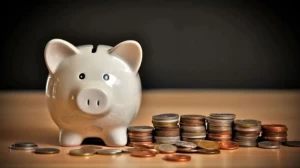
What Does Living Paycheck to Paycheck Mean?
Living paycheck to paycheck implies struggling to meet essential expenses without savings, creating financial vulnerability and hindering long-term goals.
Published Aug 03, 2023 | Updated Dec 12, 2023 | 📖 7 min read
What Does Living Paycheck to Paycheck Mean?
Living paycheck to paycheck refers to a financial circumstance where individuals or families struggle to meet their basic living expenses, including housing, utilities, groceries, and transportation, using the income from their regular paychecks. This situation entails minimal to no savings, leaving little financial buffer for unexpected expenses or income loss.
Living paycheck to paycheck is a precarious state that can induce stress, hinder long-term financial goals, and make individuals susceptible to financial emergencies. The global impact of the COVID-19 pandemic intensified this issue, exacerbating financial challenges through job losses, reduced work hours, and economic instability.
It underscored the importance of financial resilience and the need for strategies like budgeting, expense reduction, and emergency fund creation to break free from the cycle of paycheck-to-paycheck living.
How to Stop Living Paycheck to Paycheck?
Breaking free from living paycheck to paycheck is a game-changer on the road to financial stability. We'll explore practical steps like budgeting, focusing on essentials, cutting unnecessary expenses, and building a financial safety net. These strategies lay the foundation for a more secure and resilient financial future.
Create a Budget
Start by creating a detailed budget that tracks your income and all of your expenses. This will give you a clear picture of where your money is going and help you identify areas where you can cut back.
Prioritize Essentials
Focus on covering your basic needs first, often referred to as the "Four Walls": food, utilities, shelter (rent or mortgage), and transportation. Ensure your budget allocates enough for these essentials before any other spending.
Cut Unnecessary Expenses
Review your budget to identify areas where you can reduce or eliminate expenses. This might include canceling unused subscriptions, eating out less, or finding cheaper alternatives for certain goods and services.
Build an Emergency Fund
Start saving for emergencies by setting aside an initial $1,000 as quickly as possible. This emergency fund acts as a financial safety net, preventing you from going into debt when unexpected expenses arise.
Eliminate Debt
Tackle your existing debts using the debt snowball or debt avalanche method. List your debts from smallest to largest or by interest rate and focus on paying them off one at a time. As you pay off each debt, roll the payments into the next one until you are debt-free.
Increase Your Income
Consider opportunities to boost your income. This could involve taking on additional work, freelancing, or finding a higher-paying job. The extra income can accelerate your journey toward financial stability.
Live Below Your Means
Even as your income grows, resist the urge to increase your spending. Continue to live below your means, maintaining the frugal habits that helped you break free from the paycheck-to-paycheck cycle.
Save for Big Purchases
Avoid making large purchases on credit. Instead, create sinking funds for anticipated expenses like car repairs, vacations, or home improvements. Saving for these purchases in advance prevents you from going into debt.
Stay Motivated
Remember why you want to break free from the paycheck-to-paycheck cycle. Visualize your long-term financial goals, whether it's building wealth, saving for retirement, or providing a better life for your family. Your "why" will keep you motivated through challenging times.
Seek Financial Education
Consider enrolling in a financial education program like Financial Peace University or reading books on personal finance to gain more knowledge and insights into managing your money effectively.
How Much is the Percentage of People Living Paycheck to Paycheck?
As of now, 61% of Americans are living paycheck to paycheck. This financial situation affects a wide range of individuals, including both low-wage earners and high-income households. Here's a breakdown of the percentage of people living paycheck to paycheck across income levels:
Low-Wage Earners (Earning less than $50,000 a year)
It's a stark reality that almost 80% of individuals within this income bracket find themselves ensnared in the paycheck-to-paycheck cycle. Despite the challenges, these low-wage earners grapple with covering essential expenses, leaving little room for savings or financial resilience.
High-Income Earners (Earning more than $100,000 a year)
Contrary to common assumptions, a significant 40% of Americans classified as high-income earners, raking in over $100,000 annually, admit to living paycheck to paycheck. This unexpected revelation underscores the widespread impact of financial habits and the importance of intentional financial planning across income levels.
How Much of Your Paycheck Should Go to Rent?
A standard recommendation for the portion of your paycheck allocated to rent is approximately 30% of your gross monthly income, encompassing rent or mortgage payments along with associated housing expenses. Nevertheless, this ratio is subject to variation depending on factors such as your geographical location, financial objectives, and overall financial condition.
The decision to allocate more or less than 30% to housing hinges on individual circumstances and priorities, emphasizing the importance of adaptability in budgeting and financial planning.
Find valuable information at MarketsHost, where finance and business come together for your benefit.
How to Budget When Living Paycheck to Paycheck?
Budgeting when living paycheck to paycheck requires a focused approach to maximize savings and financial stability. The primary goal is to establish and grow an emergency fund, which can provide a crucial safety net for unexpected expenses. Here's a detailed strategy for budgeting in this situation:
Boost Your Earnings
To escape the cycle of living paycheck to paycheck, explore avenues to increase your income. This may involve taking on a second job or engaging in a side hustle, a trend that has gained popularity. Side hustles can range from freelancing to gig economy roles like rideshare driving or food delivery, providing an additional income source to cover essential expenses and expedite savings.
Negotiate a Higher Income
If possible, explore negotiating a salary increase or seeking a higher-paying role within your current job, leveraging the favorable labor market conditions. Capitalize on the robust job market when discussing compensation with your employer to enhance your financial standing.
Craft a Practical Budget
Develop a thorough budget detailing all income sources and expenses. Categorize expenses into necessities like rent, utilities, groceries, and transportation, and non-essentials such as dining out and entertainment. Be honest about your spending habits and establish realistic budgeting goals.
Address Credit Card Debt
Tackle high-interest credit card debt as a crucial aspect of your budgeting strategy. Prioritize paying down this debt, and consider transferring balances to credit cards offering 0% APR promotional financing to temporarily reduce or eliminate interest costs.
Establish an Emergency Fund
Dedicate a portion of your budget to savings, even if it's a modest amount. Strive to build an emergency fund with at least $1,000 initially. As your financial situation improves, progressively increase your savings to cover three to six months' worth of living expenses.
What Are the Pros and Cons of Paycheck to Paycheck?
Living paycheck to paycheck brings both immediate gratification and potential pitfalls. In this financial reality, individuals can allocate most of their income to current needs, enjoying flexibility and simplified financial management. However, this comes at the cost of financial vulnerability, limited savings, and heightened stress. Let's delve into the pros and cons of this lifestyle.
Pros of Paycheck to Paycheck
- Living this way allows you to use most of your income for current expenses and desires, enjoying spending without delays.
- There's budget flexibility without the need to save for long-term goals or navigate complex investments, allowing you to allocate money based on current needs.
- Managing finances is less complex when focused on immediate expenses, requiring less engagement with long-term planning or investment strategies.
Cons of Paycheck to Paycheck
- The significant drawback is the lack of a financial cushion, leaving you highly susceptible to unexpected expenses and emergencies.
- With little to no savings, you miss out on compounding interest benefits and lack security for future needs or retirement.
- Constant financial stress can lead to high levels of anxiety, negatively impacting overall well-being.
What Does Living Paycheck to Paycheck Mean-FAQs
1. What does it mean to live paycheck to paycheck?
Living paycheck to paycheck means that an individual's income is just enough to cover their regular expenses, leaving little or no money left over for savings or unexpected emergencies.
2. What are the common signs of living paycheck to paycheck?
Common signs include consistently running out of money before the next paycheck, inability to save for the future, reliance on credit cards or loans to cover expenses, and feeling stressed about finances due to the lack of a financial cushion.
3. Who is most likely to live paycheck to paycheck?
Living paycheck to paycheck can affect people across different income levels.
4. How can living paycheck to paycheck impact financial well-being?
Living paycheck to paycheck can lead to financial instability and vulnerability.
5. How can one break the cycle of living paycheck to paycheck?
Breaking the cycle involves creating a budget, identifying areas to cut unnecessary expenses, building an emergency fund, seeking additional income through side jobs or career advancements, and adopting mindful spending habits to ensure financial stability and better long-term planning.




